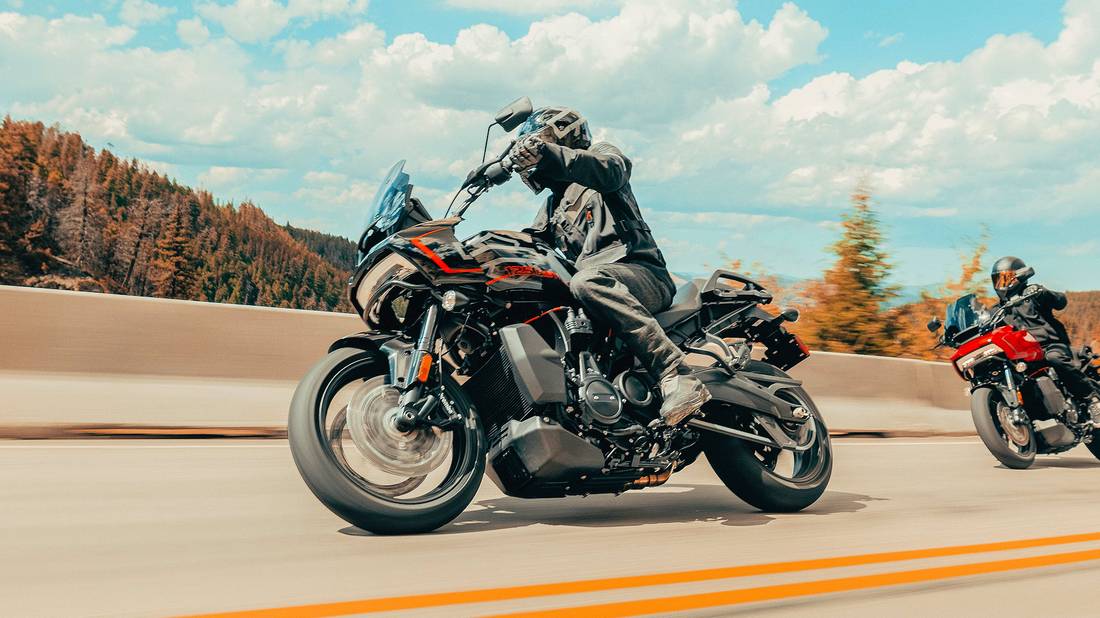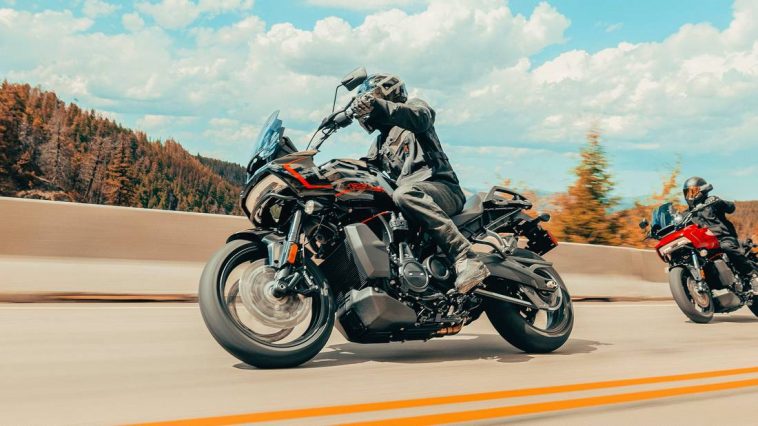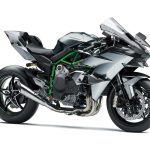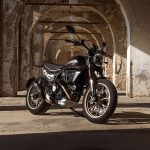

Harley-Davidson’s Bold Move: The Sport Touring Evolution
The motorcycle industry has long been defined by established icons and familiar images. Harley-Davidson, for instance, has been synonymous with heavy-set cruisers adorned in chrome, leisurely tourers built for long, comfortable journeys, or even the rugged image made famous by larger-than-life figures. Yet in a surprising and revolutionary shift, Harley-Davidson has reimagined its legacy. With the introduction of the Pan America 1250 ST, the company boldly ventures into a realm where sport touring meets the twisty thrills of tarmac riding—a move that significantly alters consumer expectations in this evolving market.
At first glance, the Pan America 1250 ST appears to defy the typical Harley mold. Gone are the days when one imagined a Harley solely in the context of a laid-back cruiser or a heavy-duty touring model. This new offering is designed for riders who seek dynamic performance on winding roads. It introduces a fusion of adventure touring capabilities with a focus on agile handling—a clear sign that Harley-Davidson is ready to rethink its approach to motorcycle design.
Embracing the Twisties: Redefining the Harley Identity
When traditional enthusiasts envision the Harley brand, they often picture bikes with a heavy dose of heritage, rugged styling, and perhaps even a sprinkle of nostalgia for the bygone eras of American motorcycling. Yet the Pan America 1250 ST challenges these accustomed images. The model is demonstrably different, featuring design elements and riding dynamics that appeal to those who relish cornering twisties, where the ride is not just about cruising but also about excitement and agility.
This departure from the norm is not simply a cosmetic upgrade; it represents a careful recalibration of Harley’s brand identity. In the span of less than a decade, the company has made several adjustments to its lineup, signaling that it is ready to take on new markets. By steering its engineering prowess toward a sport touring niche, Harley-Davidson is attempting to broaden its appeal to riders who favor a more dynamic, performance-oriented experience.
While such changes might be perceived by some traditionalists as a departure from what made Harley iconic, they also reflect the company’s willingness to challenge itself by addressing the tricky parts of modern motorcycle demands. By converting its typical touring design to include sport-centric features, Harley-Davidson is proving that it can be both true to its roots and innovative enough for the road ahead.
The Engine of Innovation: A Closer Look at the Revolution Max 1250
A motorcycle’s powerplant is often at the heart of its identity and performance capabilities. In the case of the Pan America 1250 ST, the Revolution Max 1250 engine is nothing short of revolutionary. This 60-degree V-twin, fully liquid-cooled engine comes with overhead camshafts, no pushrods, and variable valve timing on all valves. These design choices generate a potent mix of torque and peak power, making it a formidable competitor in the sport touring arena.
Below is a breakdown of the key engine specifications that illustrate its impressive performance:
| Specification | Details |
|---|---|
| Engine Configuration | 60-degree V-twin, liquid cooling, DOHC, 4 valves per cylinder, VVT on all valves |
| Displacement | 1,250 cc |
| Bore x Stroke | 105 x 72.3 mm |
| Compression Ratio | 13:1 |
| Power | 149 HP @ 8,750 RPM |
| Torque | 91 LB-FT @ 6,750 RPM |
This engine is super important to the bike’s appeal because it allows the Pan America 1250 ST to produce a power output that few touring bikes can match. Its design enables an energetic response that is particularly appreciated when taking on winding roads where each twist and turn demands instantaneous power delivery.
Moreover, the engine’s integration with modern electronics—such as the six-axis Inertial Measurement Unit (IMU)—adds to the overall performance envelope, ensuring that under rigorous conditions, the rider receives the best possible feedback and response. This impressive blend of mechanical engineering and digital precision signifies Harley-Davidson’s commitment to evolving with the times.
Chassis and Handling: Shaping the Ride for Tarmac Enthusiasts
A motorcycle’s chassis is its backbone, and for the Pan America 1250 ST, significant adjustments have been made to cater to tarmac riding. Understanding the importance of handling on twisty roads, Harley-Davidson has introduced a meticulously reworked chassis that features a reduced suspension travel of 6.75 inches and a lower, more approachable seat height.
These changes are more than mere tweaks; they are designed to improve cornering stability and overall ride dynamics. Here are some of the subtle parts of the chassis and suspension modifications:
- Lowered Suspension Travel: The new suspension setting helps the motorcycle sit closer to the ground, which not only contributes to better handling but also provides a sportier stance.
- One-Piece Seat: Replacing the older stepped designs, this new seat design contributes to an improved riding posture, offering both comfort and a lower center of gravity.
- Adjustable Rear Preload: The ability to electronically adjust rear preload allows riders to fine-tune their ride according to personal preference and road conditions.
Another noteworthy aspect is the role of well-known suspension components provided by Showa. The front features inverted 47 mm ‘Balance Free Forks’ while the rear utilizes a piggyback reservoir monoshock. Both are engineered for manually adjustable compression and rebound damping. Such components are critical in ensuring that Harley-Davidson’s retooled chassis not only meets but exceeds the demands of sport touring enthusiasts who appreciate a blend of performance and comfort.
This reimagined chassis is an example of Harley-Davidson taking on the tarmac with confidence—figuring a path toward a broader market by addressing specific riding challenges that many sport touring owners encounter.
Advanced Technology and Safety Features: Working Through the Legal Landscape
The Pan America 1250 ST is not only a beast in performance; it also integrates advanced electronics and safety technology as standard. Among the many features that stand out is the six-axis IMU. This sophisticated sensor setup is designed to support a host of safety and performance functions that reassure both the rider and regulators in a landscape that is often loaded with issues regarding consumer safety.
Such safety features include:
- Cornering ABS
- Cornering drag-torque slip control
- Wheelie mitigation
- Hill hold assist
- Tire pressure monitoring as a standard inclusion
All these added layers of electronic intervention work in tandem to provide a ride that is both exhilarating and responsibly engineered. From a legal perspective, the integration of these features highlights Harley-Davidson’s effort to align with regulatory standards. As governments worldwide tighten safety regulations for motorcycles, features like a two-way quickshifter and an adaptive ride height system (which automatically lowers the suspension at slow speeds) become key selling points.
Furthermore, the inclusion of a 6.8-inch TFT color display equipped with Bluetooth connectivity is not merely about enhanced rider experience; it is also about ensuring that riders have access to real-time data, navigation, and alerts—which could prove critical in legal disputes or safety audits should any incidents arise on the road.
Comparative Analysis: Pan America 1250 ST vs. Its Competitors
No new product exists in a vacuum. The Pan America 1250 ST must prove its mettle when pitted against other contemporary models in the sport touring segment. Competitors like the BMW S 1000 XR, KTM 1290 Super Duke GT, Suzuki GSX-S1000GX+, and Kawasaki Versys 1100 LT SE ABS each bring their own set of strengths and challenges to the table.
To get a closer look at how these bikes stack up against one another, consider the following table that outlines key specifications:
| Model | Engine Type | Displacement | Power | Torque | Curb Weight | Price |
|---|---|---|---|---|---|---|
| Harley-Davidson Pan America 1250 ST | 60-degree V-twin | 1,250 cc | 145 HP @ 8,750 RPM | 95 LB-FT @ 6,750 RPM | 542 Lbs | $19,999 |
| KTM 1290 Super Duke GT | 60-degree V-twin | 1,301 cc | 172.6 HP @ 9,750 RPM | 104 LB-FT @ 7,000 RPM | 492 Lbs | $20,499 |
| BMW S 1000 XR | Inline four-cylinder | 999 cc | 170 HP @ 11,000 RPM | 84 LB-FT @ 9,250 RPM | 500 Lbs | $17,995 |
| Suzuki GSX-S1000GX+ | Inline four-cylinder | 999 cc | 152 HP @ 11,000 RPM | 78.2 LB-FT @ 9,250 RPM | 511 Lbs | $18,599 |
| Kawasaki Versys 1100 LT SE ABS | Inline four-cylinder | 1,099 cc | 133 HP @ 9,000 RPM | 82.5 LB-FT @ 7,600 RPM | 571 Lbs | $19,499 |
This comparative analysis brings out a few key points. The Pan America 1250 ST holds its own in terms of power and torque. However, it is also up against bikes built on platforms known for their reliability and lower maintenance costs. While the premium brands of BMW and KTM offer superior performance in some respects, their pricing and target audience may differ, leaving room for Harley-Davidson to appeal to a specific segment of sport touring enthusiasts.
In evaluating these details, one must also consider the fine shades between each motorcycle’s design choices. The Pan America’s unique chain drive, for example, sets it apart from other models that rely on shaft or belt drives, a factor that has both technical and legal implications in terms of reliability standards and regulatory compliance.
Consumer Perspective: Value, Maintenance, and Legal Aspects of Ownership
From a consumer standpoint, purchasing a motorcycle such as the Pan America 1250 ST involves more than just a test ride—it requires an understanding of the broader issues linked to ownership, maintenance, and legal liabilities. For instance, the improvements in safety technology and electronic systems not only serve to heighten the riding experience but also provide critical support in situations where legal or insurance concerns might arise after an incident.
Owners need to be aware of certain aspects when making their decision:
- Maintenance Costs and Service Intervals: With complex engineering comes the responsibility of upkeep. The advanced electronics and suspension systems, while offering significant performance benefits, might lead to higher maintenance expenses. However, these costs could be justified by the enhanced safety features and performance gains.
- Resale Value and Depreciation: Establishing a robust resale value is essential in this market. Harley-Davidson’s move towards a sport touring model could attract a new demographic, potentially favorably affecting depreciation rates over time.
- Legal Liability and Insurance: Given the introduction of high-performance features and a reimagined chassis, consumers and insurers alike must work through potential legal implications. The enhanced braking systems, cornering ABS, and tire pressure monitoring add layers of protection that not only appeal to riders but may also be favorable in reducing liability risks.
These aspects are interwoven with the daily experiences of motorcycle owners. For example, a well-calibrated safety suite can prove to be super important during insurance assessments following an accident. Similarly, rigorous adherence to maintenance schedules and understanding the legal responsibilities associated with owning a high-performance motorcycle can offer peace of mind to both riders and legal professionals alike.
Potential Regulatory and Liability Implications: Motorcycling in Today’s Market
The modern motorcycle market is not solely about engineering excellence—it is equally about compliance with national and international safety standards. The regulatory framework governing motorcycles has become increasingly stringent, with a focus on reducing accidents through enhanced electronic safety measures and advanced rider-assist features.
In this context, Harley-Davidson’s decision to include features such as the six-axis IMU, adaptive ride height, and comprehensive braking systems is strategic. It shows an awareness of the legal requirements that now condition how motorcycles are designed, tested, and ultimately marketed.
From a legal perspective, several factors deserve attention:
- Safety Compliance: The integration of technology such as cornering ABS and electronic traction control helps ensure compliance with evolving safety standards. These features not only prevent accidents but also reduce the risk of litigation by demonstrating a commitment to rider safety.
- Data and Privacy Considerations: With the incorporation of Bluetooth connectivity and advanced TFT display systems, issues related to data collection, privacy, and cybersecurity emerge. Manufacturers and legal entities must work together to protect consumer information as motorcycles become ever more connected.
- Warranty and Recalls: As innovative technologies replace established design conventions, there is an increased potential for unforeseen issues. Legal teams must be prepared to manage claims related to warranty disputes or product recalls, ensuring that liability is appropriately addressed.
These regulatory and liability considerations are not only about preventing legal disputes but also about fostering a transparent, consumer-friendly market. Understanding these tricky parts of motorcycling law can help riders make informed decisions, and it signals to regulators that manufacturers are serious about meeting legal standards.
The Future of Harley-Davidson: Legal and Business Considerations
Looking forward, Harley-Davidson’s strategic pivot with the Pan America 1250 ST signals broader business and legal implications. It is clear that the company is responding to both market pressures and regulatory demands by reconfiguring its approach. Not only is the motorcycle built for modern roads, but its design also reflects a careful reckoning with the legal landscape of product safety and consumer protection.
Business experts and legal analysts alike observe that this move may set a precedent in an industry that has long been resistant to rapid change. The willingness to take a closer look at traditional product categories—such as touring motorcycles—and to add dynamic, sport-focused variants is indicative of a broader trend. Manufacturers who wish to remain competitive must find their way through the tangled issues of modern engineering while simultaneously addressing consumer safety concerns and regulatory challenges.
Key legal and business considerations going forward include:
- Innovation Versus Tradition: Harley-Davidson’s approach highlights the tension between maintaining a storied legacy and embracing innovation that meets contemporary demands. Legal frameworks must evolve alongside such innovations, ensuring that new technologies and designs are safely incorporated into the marketplace.
- Market Competition and Intellectual Property: With competition from established premium brands like BMW and KTM, as well as cost-effective models from Suzuki and Kawasaki, intellectual property rights and technology transfer issues become increasingly important. Ensuring that innovative features remain proprietary while avoiding infringement pitfalls is a challenging yet critical priority.
- Consumer Advocacy and Transparency: An era of connected vehicles means that consumers have access to more data and, consequently, greater insight into product performance and safety. This transparency not only benefits riders but also sets a higher standard for accountability in the event of legal disputes.
These factors spotlight the importance of a forward-thinking approach—not just in product design but in how companies engage with regulatory bodies, legal advisors, and ultimately the consumer. Harley-Davidson’s latest venture is a case study in balancing legacy with progress while keeping an eye on the legal repercussions of innovation.
Conclusion: A Bold Step Into Untrodden Territory
In conclusion, the Harley-Davidson Pan America 1250 ST is more than just a motorcycle—it is a statement. It represents a pivotal moment in the evolution of an iconic brand, as Harley-Davidson takes calculated risks to broaden its appeal, challenge established perceptions, and embrace a future defined by both innovation and legal accountability.
The journey of transitioning from classic cruiser imagery to a modern sport touring powerhouse has not been without its intimidating challenges. However, by addressing the tricky parts of design, incorporating advanced safety features, and remaining mindful of stringent regulatory demands, Harley-Davidson has managed to craft a model that stands out in a crowded market.
This reimagined motorcycle is a prime example of how tradition and innovation can coexist. Its robust engine, reworked chassis, sophisticated electronics, and competitive performance figures underscore the potential for legacy brands to evolve while retaining the core values that made them beloved in the first place.
For industry observers, legal experts, and motorcycle enthusiasts alike, the Pan America 1250 ST is a fascinating development. It challenges preconceived notions about what a Harley can and should be, inviting riders to explore new riding dynamics and advocating for a broader interpretation of performance and safety standards in the motorcycle industry.
As we look ahead to a future where the legal framework of motorcycling continues to evolve in tandem with technological innovation, the Pan America 1250 ST stands as a beacon. It encourages manufacturers to take a closer look at both the fine points of engineering and the often intimidating twists and turns of modern regulatory compliance, all while offering a ride that is as thrilling as it is responsible.
Ultimately, Harley-Davidson’s bold step into untrodden territory is a reminder that progress often requires challenging accepted wisdom. By charting a path that merges classic brand heritage with modern performance capabilities, the company is not only redefining its own identity but also inspiring an entire industry to rethink what is possible on two wheels.
For those eager to experience the next generation of sport touring, the Pan America 1250 ST offers an exciting glimpse into the future—a future where innovation, safety, and legal prudence converge to create a riding experience that truly stands apart.
Originally Post From https://www.topspeed.com/harley-davidson-handle-twisties/
Read more about this topic at
The Pan America 1250 ST Is The Harley …
How badly do these handle corners? : r/Harley


